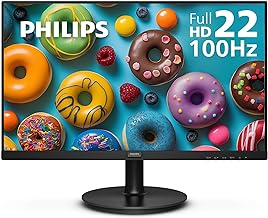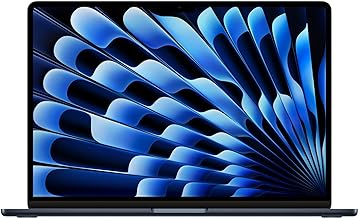5 important factors worth considering when looking for the best monitor
As we explore the world of technology, the monitor is an important part of our digital experience. Although it may not always be the first thing we consider, the monitor we choose can have a big impact on how productive and comfortable we are while using our devices. With so many options available, it’s crucial to understand the key factors that are important when making this important decision. Things like resolution, screen size, panel type, and refresh rates all play a role in creating a smooth and enjoyable visual experience that meets our individual needs. In the constantly changing world of monitors, knowing these important factors is essential to making sure we don’t just buy a device, but choose a companion for our daily digital activities.
See our guide to the best monitor.
Screen size and resolution
Choosing the right monitor can be overwhelming because there are so many options available. Two important things to consider are the size of the screen and its resolution. A bigger screen gives you a better viewing experience, especially for things like playing games, watching videos, or doing multiple things at once. On the other hand, a higher resolution means that images and text will be clearer, which is important for professionals who need to work on detailed projects or edit videos.
It’s important to find a good balance between screen size and resolution. If you get a big screen with a low resolution, the image quality might not be great. But if you choose a small screen with a super high resolution, it could be hard on your eyes if you use it for a long time. You should think about how you plan to use the monitor and what you personally like before making a decision. Your perfect monitor will help you be more productive, enjoy entertainment, and have a better overall experience on your computer. It should be visually appealing and efficient, meeting your specific needs.
Panel type
Choosing the right monitor depends on the type of panel it has, which affects how well it performs and how good the visuals are. There are a few different panel types like IPS, TN, and VA, each with their own pros and cons. IPS panels are great for graphic designers and content creators because they show colors accurately and can be seen well from different angles. TN panels are best for gamers who want quick responses for fast-paced games. VA panels are a mix of the two, with good color and contrast and decent response times.
It’s important to pick a panel type that fits your needs and how you plan to use the monitor. IPS panels are good for people who want vivid colors and high quality images. Gamers might prefer TN panels for their quick responses, which are important for competitive gaming. Think about how you will primarily use the monitor, your budget, and whether color accuracy or refresh rates matter more to you. Learning about each panel type’s strengths and weaknesses will help you make a smart choice that matches what you want, giving you the best viewing experience for you.
Refresh rate
When buying a monitor, many people overlook the refresh rate, but I believe it’s really important. A higher refresh rate, like 144Hz or 240Hz, can make your viewing experience much better, especially for gaming or watching fast-paced content. It provides smoother motion and less blur, which makes things more immersive and responsive.
Getting a monitor with a higher refresh rate can also help keep you up to date with technology. Whether you’re a casual user or a serious gamer, a high refresh rate monitor has clear benefits. It improves the quality of what you’re seeing and gives you an edge in fast games where every millisecond matters.
In short, focusing on the refresh rate when buying a monitor can take your viewing experience to the next level and give you better performance that lower refresh rates can’t match.
Response time
When you’re buying a new monitor, it’s important to consider response time, not just resolution and size. Response time can impact how clear and smooth fast-moving images are on the screen, especially during activities like gaming or watching action-packed movies. A monitor with a fast response time will help avoid motion blur or ghosting, which can make the visuals look less sharp and exciting.
Having a monitor with a low response time also reduces input lag, making it feel more responsive when you’re playing games or doing tasks that need quick reactions. This can be especially helpful in competitive gaming where quick decisions can determine whether you win or lose. So, when choosing a monitor to buy, remember to prioritize response time along with other features to ensure you get a visually stunning and immersive viewing experience.
Connectivity options
When you’re buying a new monitor, the different ways it can connect to other devices are really important for how easy and enjoyable it is to use. Connectivity options like HDMI, DisplayPort, USB-C, and VGA play a big role in how well the monitor works with other gadgets. While HDMI is a common choice because it’s everywhere, DisplayPort is better for gamers and professionals who need fast speeds. USB-C is great for both data and video, making setup easier and less cluttered. When you’re deciding on how to connect your devices, it’s smart to think about how you can keep your setup up-to-date with new technology.
Getting a monitor with lots of connection options doesn’t just make it more useful now, but it also helps you stay ready for future improvements. Whether you make content, play games, or work with different devices, having lots of different ports helps you switch between setups easily without losing performance. And by being able to connect to different standards, your monitor can stay relevant for a long time without needing frequent upgrades. But because technology is always changing, it’s important to find a balance between what you need now and what might come in the future. By picking the right connections for your needs, you can create a smooth and efficient workflow that can change along with the digital world.
Conclusion
The ongoing debate about whether monitoring devices are necessary is endless, but we cannot ignore the impact they have on our lives. Monitors are important for increasing productivity and keeping us secure in our everyday activities. As technology progresses, monitors will bring both good and bad effects. We need to be careful in how we use monitoring technology, making the most of its benefits while minimizing any drawbacks. By finding a balance between convenience and privacy, we can use monitors to improve our lives while still protecting our rights and values. Want more info on roll pin punch set for gunsmithing, check the best roll pin punch set for gunsmithing.


